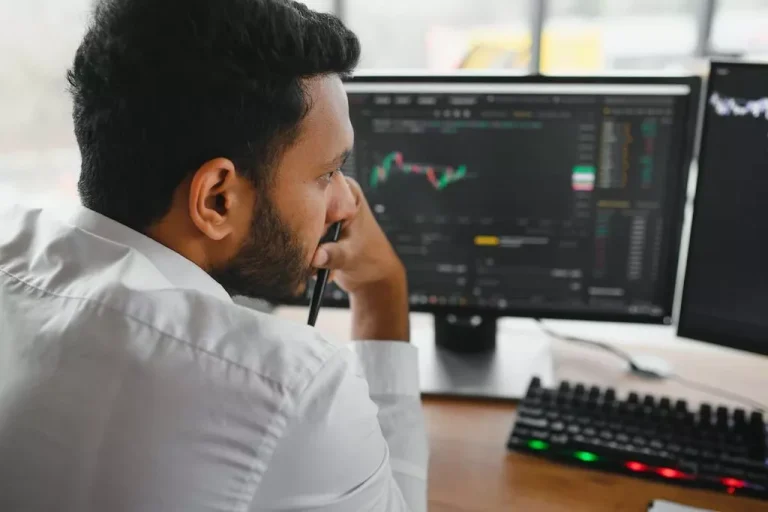Content
(Acorns portfolios include funds with exposure to thousands of stocks and bonds. You can start investing for as little as $5.) That way you know you’ll be ready, no matter what happens next. And market volatility can simply offer you opportunities to buy low, sell high, and realize all your financial dreams. You can’t make money https://www.xcritical.com/ in financial markets without prices moving. The degree to which prices rise and fall is called the market’s volatility index. Price volatility offers a way to measure the range of potential returns when talking about a security or market index. Most of the time, the riskier the security is, the higher its volatility will be.
What Does High Volatility Mean?
Roger Ibbotson takes a historical perspective and argues that volatility, while frightening for individuals, can play an important role in the economy. Standard Deviation measures the degree to which a fund’s performance has varied from its average performance over a particular time period. The greater the standard forex volatility pairs deviation, the greater a fund’s volatility.
What are the Factors affecting Volatility?
When the stock market gets rocky, focusing on your overall financial picture, combined with sound planning, can pay dividends. A high level of price fluctuations is not always a fair indicator of the level of risk. There are examples when assets with a large price spread show higher returns in the long term while in the short term they turn out to Proof of personhood be high risk.
Why does market volatility matter?
Leading up to a company’s earnings report, the implied volatility tends to increase substantially (i.e. options activity and variance), especially for high-growth equities. Uncertainty results in more volatility, and the prevailing market sentiment emerges in the prices of speculative financial instruments. In effect, investors demand a higher rate of return to compensate for undertaking more uncertainty, i.e. a higher cost of equity. Otherwise, the investor could be forced to hold the investment for an extended period of time, which makes the stock a less attractive opportunity. While the term “volatility” applies to both up- and-down-market movements, investors tend to be more concerned about downside volatility.
Establish or revisit your financial plan

This report has been prepared without regard to the specific investment objectives, financial situation and needs of any particular recipient. Any references to historical price movements or levels is informational based on our analysis and we do not represent or warranty that any such movements or levels are likely to reoccur in the future. This metric takes a market’s annualised returns over a given period and subtracts it from the current market price to see any variances.
Over the past three days, the asset’s volatility has become high compared to the last month. Companies with inelastic demand own stocks with low market volatility. Their products will always be popular regardless of the market situation, purchasing power, and other factors. Also, some companies in the technology sector show stable growth with little volatility. Their share price is supported by the positive dynamics of the financial data and releases of new developments. Bank and is not intended to be a forecast of future events or guarantee of future results.
Any movement up or down from its expectation is the volatility. Upside Capture Ratio measures performance in up markets relative to the benchmark. The net expense ratio reflects the total annual operating expenses of a mutual fund after taking into account any fee waiver and/or expense reimbursement. The net expense ratio represents what investors are ultimately charged to be invested in a mutual fund.
- The two types of volatility are historical volatility and implied volatility.
- It is not suitable for all investors and you should make sure you understand the risks involved, seeking independent advice if necessary.
- Higher GDP growth rates frequently result in higher investor confidence and an optimistic mood in the stock market, lowering volatility.
- In addition, scandals can lead to new regulations that could impact companies within and outside the industry.
- The Russell 1000 Value Index measures the performance of the large-cap value segment of the U.S. equity universe.
When the economy is doing particularly well, investors might even see a bull market where prices continue to rise. Conversely, factors like GDP, consumer spending or inflation can cause a sharp decline in the market. In either case, the economy experiences volatility with both positive and negative effects.

When large swings occur, it increases the chance for bigger profits in a smaller timeframe. But it does also increase the risks, as a market can move against you just as quickly. Markets are always on the move, but the speed and size of price changes is what creates excitement (and risk) for traders.
For example, a stock with a beta value of 1.1 has moved 110% for every 100% move in the benchmark, based on price level. Unlike historical volatility, implied volatility comes from the price of an option itself and represents volatility expectations for the future. Because it is implied, traders cannot use past performance as an indicator of future performance. Instead, they have to estimate the potential of the option in the market. If the market is super volatile, be aware that it might be a turbulent time for the company and it may experience losses. Look to see how the company reacted and recovered during other times of volatility such as the 2007 stock market crash.

Volatility is just noise when you allow your investments to compound long into the future. For the entire stock market, the Chicago Board Options Exchange (CBOE) Volatility Index, known as the VIX, is a measure of the expected volatility over the next 30 days. The number itself isn’t terribly important, and the actual calculation of the VIX is quite complex. GDP measures the goods and services a country produces, and people consider it a comprehensive measure of economic growth.
The term �price volatility� is used to describe pricefluctuations of a commodity. Volatility is measured by the day-to-daypercentage difference in the price of the commodity. The degree of variation,not the level of prices, defines a volatile market. Since price is a functionof supply and demand, it follows that volatility is a result of the underlyingsupply and demand characteristics of the market. Therefore, high levels ofvolatility reflect extraordinary characteristics of supply and/or demand. Experienced equity and fixed income investors know that a diversified stock and bond portfolio is the key to wealth accumulation, but also realize that markets don’t move in a straight line.
Volatility is often used to describe risk, but this is not necessarily always the case. Risk involves the chances of experiencing a loss, while volatility describes how much and quickly prices move. If increased price movements also increase the chance of losses, then risk is likewise increased. Volatility is a key variable in options pricing models, estimating the extent to which the return of the underlying asset will fluctuate between now and the option’s expiration. Volatility, as expressed as a percentage coefficient within option-pricing formulas, arises from daily trading activities. How volatility is measured will affect the value of the coefficient used.
A recent example is the change in oil prices following the 2022 Russian invasion of Ukraine. A bull market is when market prices rise for a sustained period of time. As opposed to a bear market, these periods can see stocks rise by around 20%. During these times, investors often use buy-and-hold strategies to help profit from securities or momentum strategies.
